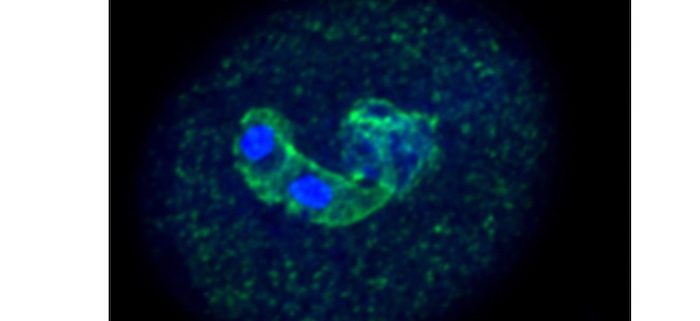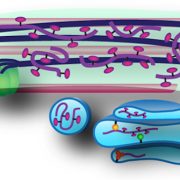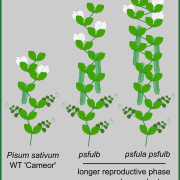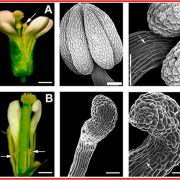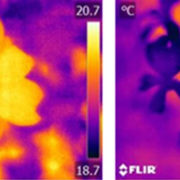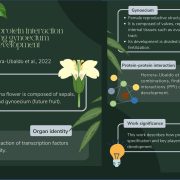LARP6C reveals its double face during plant fertilization
By Elodie Billey1,2,3, Said Hafidh4, Cécile Bousquet-Antonelli1,2
1 CNRS LGDP-UMR5096, 58 Av. Paul Alduy 66860 Perpignan, France.
2 Université de Perpignan Via Domitia, LGDP-UMR5096, 58 Av. Paul Alduy 66860 Perpignan, France.
3 Elodie Billey present address: TOTAL RC, 2 place Jean Millier – Arche Nord Coupole/Regnault, 92078 Paris La Défense Cedex, France.
4 Laboratory of Pollen Biology, Institute of Experimental Botany of the Czech Academy of Sciences, Rozvojovà 263, 165 02 Prague 6, Czech Republic.
Background: In flowering plants, pollen delivers male genetic material into the ovule, which is embedded in the pistil. When mature, the pollen dehydrates, turning “dormant”, with most of its cellular activities shutdown. Upon landing on a pistil, the pollen rehydrates and “awakens”; it germinates and grows a protrusion, the pollen tube, which elongates and navigates into the pistil guided by ovule-emitted signals, a process known as pollen tube guidance. Dormant pollen contains mRNAs encoding proteins stored as translationally silent. When the pollen “awakens”, translation is reactivated, which is crucial for the emergence of pollen tubes and their penetration into the pistil.
Question: How are mRNAs chosen to be stored? How do they reenter translation? Which proteins are involved in this process? We previously proposed that Arabidopsis thaliana LARP6C regulates mRNAs through direct binding, but we did not know which mRNAs it controls, how this occurs, and what purpose it serves in plant development. Since LARP6C is a pollen-specific protein, we studied its roles in plant reproduction.
Findings: Using Arabidopsis mutants, we show that pollen deprived of LARP6C has delayed germination and guidance defects. By binding to and regulating a precise subset of mRNAs, LARP6C controls lipid biology and vesicular trafficking in pollen tubes. The misregulation of these processes in larp6c-depleted pollen is likely the basis of their germination and guidance defects. Exploring how LARP6C regulates its mRNA targets, we discovered that this two-faced protein acts as a translational repressor in dormant pollen and an activator when the pollen “awakens”. However, things are not so simple as this: successful pollen tube guidance is seemingly dependent upon the two faced-nature that LARP6C retains in elongating pollen tubes.
Next steps: Next, we will seek to understand how LARP6C shifts from a repressor to an activator of translation when pollen exits its dormant state. This work also opens the possibility that the guidance process requires that some mRNAs are only reactivated translationally when they reach a precise subcellular location in the pollen tube. With LARP6C likely being part of this mechanism, we have a unique opportunity to explore this model.
Elodie Billey, Said Hafidh, Isabel Cruz-Gallardo, Celso G. Litholdo Jr., Viviane Jean, Marie-Christine Carpentier, Claire Picart, Vinod Kumar, Katarina Kulichova, Eric Maréchal, David Honys, Maria R. Conte, Jean-Marc Deragon, and Cécile Bousquet-Antonelli (2021). LARP6C orchestrates post-transcriptional reprogramming of gene expression during hydration to promote pollen tube guidance. Plant Cell https://doi.org/10.1093/plcell/koab131


